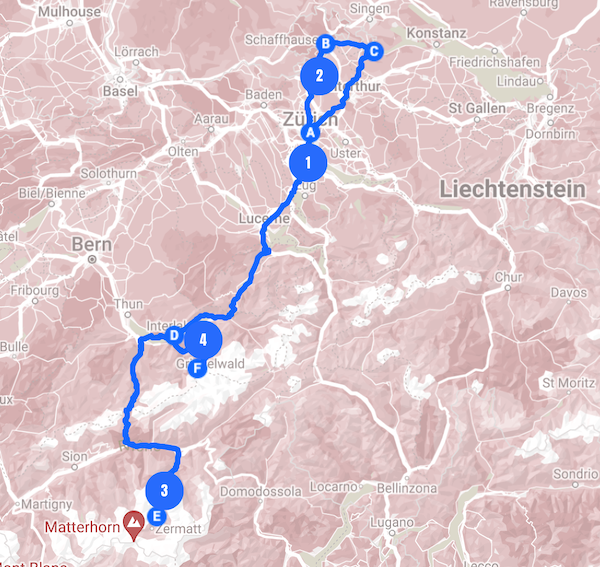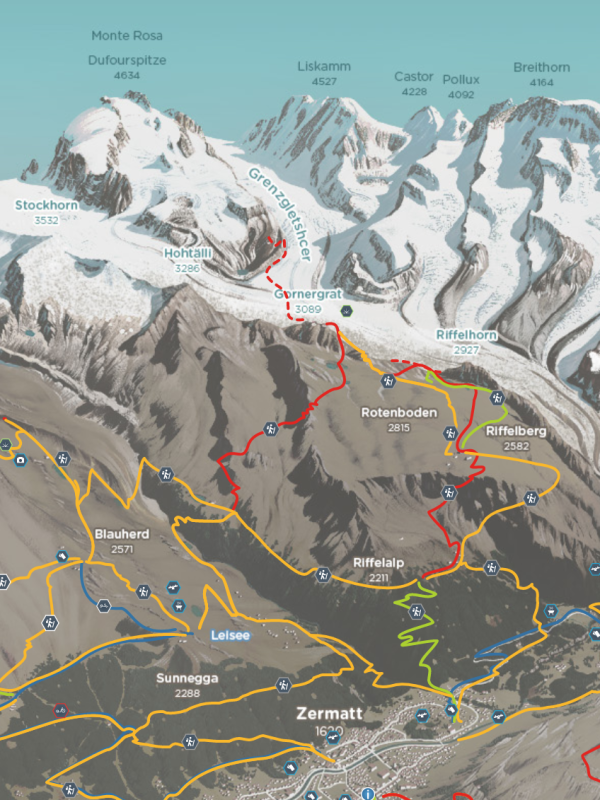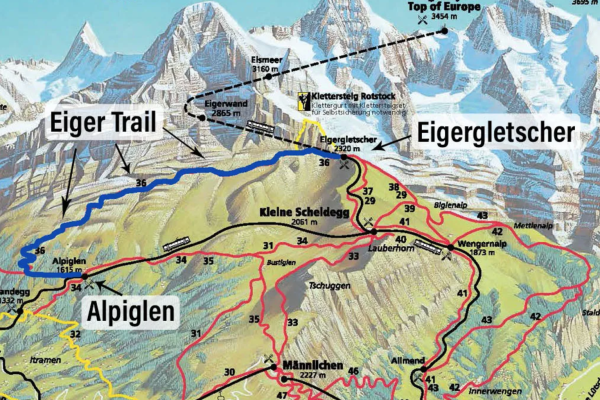Switzerland
With its breathtaking landscape and world-class economy, Switzerland’s long-standing status as the world’s top tourism hotspot remains unchallenged. From the pristine snow-capped Alpine mountains to the picturesque waterfalls and lakes, every corner of this country is heaven to outdoor lovers. Spending only 4 days across Switzerland is far from adequate, but we squeezed 2 weekends to check out the main attractions during a work trip based in Zurich. This 4-days itinerary is quite rushed but works if you are short on time.
FULL ITINERARY
- Nature
- Hiking
- Old Town
- Traveled in July 2018
Day 1
Zurich
Explore Zurich old town where the emerald green Limmat River runs through | Overnight in Zurich
10:00 am
Arrival
- Getting to city center
Arrive airport and take one of the many trains to the main Zurich Hauptbahnhof train station near Old Town. The ride takes about 10 minutes.
10:30 am
Zurich Old Town 🅐
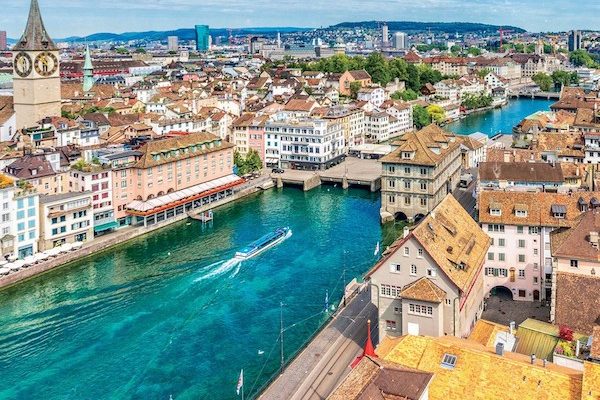
Our first view of Zurich was jaw dropping. From a bridge outside the train station, we couldn’t believe the emerald green Limmat River dotted with swans was actually real. Did we just step into a fairytale?
Wandering around the cobblestoned alleys along both sides of the Limmat River was good enough for us. Having just arrived from an international flight with severe jet lag, we didn’t want to do much in the day and chose not to visit any of the four main churches (Grossmünster, Fraumünster, St. Peter, and Predigerkirche). You should be able to visit some of the churches and museums on this day if you like.
12:00 pm
Lunch
4:30 pm
Lindenhof Hill
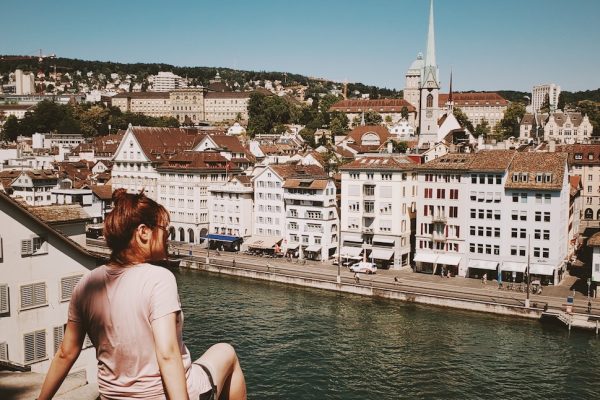
Lindenhof Hill is a tree-covered square on top of a small hill overlooking Limmat River. It’s one of the best places to relax and enjoy the view.
5:00 pm
Bahnhofstrasse
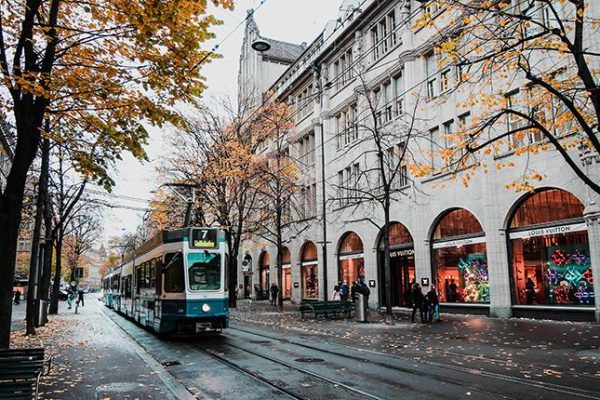
Strolling along the luxury shopping district that is the main street of downtown Zurich, I didn’t think there was anything too special other than the watches I cannot afford.
6:00 pm
Dinner
Day 2
Rhine Falls & Interlaken
A short trip out of Zurich to visit Rhine Falls and the nearby medieval towns, then off to the Swiss Alps based in Interlaken | Overnight in Interlaken
9:00 am
Train to Rhine Falls 🅑
To make the day more efficient, check out the hotel in Zurich before heading to Rhine Falls for a short side trip. Since you will be back in Zurich before heading out to Interlaken later in the day, you may want to store luggage at the Zurich train station. There are plenty of lockers in the station down the escalator from the main entrance.
- Getting to Rhine Falls
Train from Zurich to Neuhausen Rheinfall station takes about an hour and there’s a train every 30 minutes. The falls are just a few minutes’ walk outside the station.
10:30 am
Rhine Falls
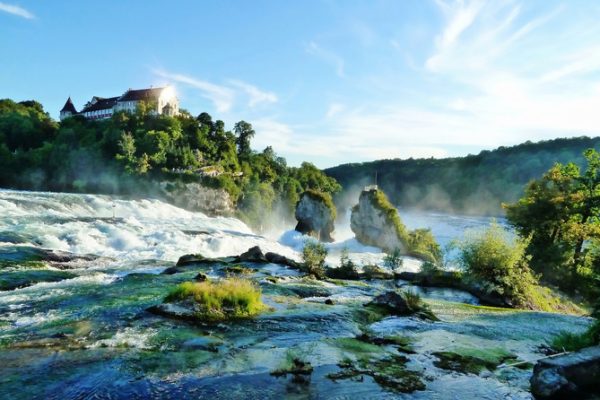
The misty falls amidst lush greens, rock formations, bridges and castles make it a sight that looks like something straight out of fairytale books. We didn’t stay long but there’s a 2km trail along the river you can hike, or dine in the castle overlooking the falls if you like.
11:30 am
Schaffhausen
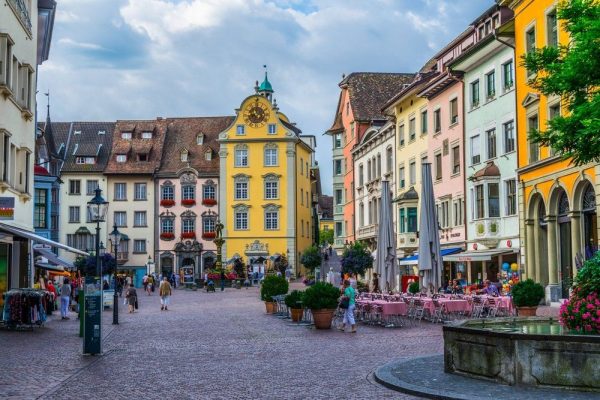
Less than 10 minutes away by train or 15 minutes by bus from the Rhine Falls, Schaffhausen has a charming and tranquil medieval town center that is worthwhile to stop by.
12:30 pm
Lunch
2:00 pm
Stein am Rhein 🅒
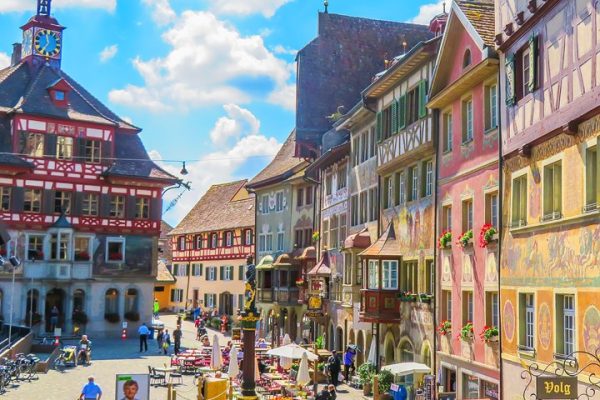
About 20 minutes’ train ride from Schaffhausen, Stein am Rhein is another picturesque medieval town not to be missed.
3:00 pm
Train to Interlaken 🅓
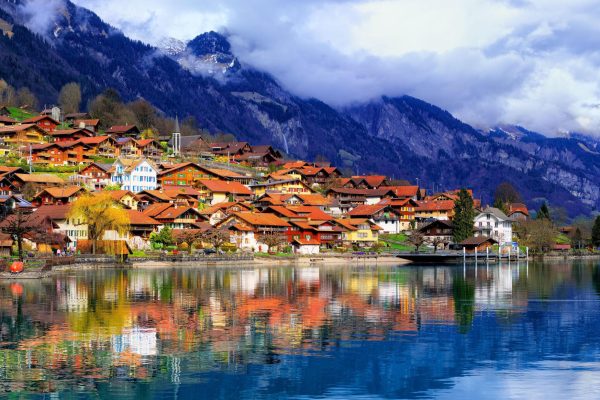
Check in at a hotel in Interlaken. This is where you will be based to explore the Alps in the next couple of days.
- Getting to Interlaken
You will need to transit through Zurich station to get to Interlaken. There are multiple trains each hour from Zurich to Interlaken Ost or West station. The best way to plan this is to use the Swiss Railway (SBB) Official Time Table (though Google Map also worked for us). The cost is around CHF 60-80 per person.
You may be asked to select routes when buying the ticket. The fastest way to Interlaken is the direct IC train through Bern, which may require a change of train at Spiez. This would take about 2 hours. However, if you’d like to go with the scenic route, you should choose the route via Luzern, which will take about 3.5 hours.
7:00 pm
Dinner
Day 3
Zermatt
Day trip to Zermatt and admire the highest peaks of the Alps including the iconic Matterhorn from the Gornergrat | Overnight in Interlaken
8:00 am
Train to Zermatt 🅔
Start as early as you can because it’s quite a busy day to make a day trip to Zermatt from Interlaken. It’s always better to stay in Zermatt for a few days if you have time to do so.
- Getting to Zermatt
Take the train from Interlaken to Zermatt. It’s a busy day so take the fastest IC train via transfers in Spiez and Visp. This route departs from Interlaken Ost/West every hour and takes about 2 hours. One-way train ticket costs around CHF80 per person.
10:00 am
Cogwheel Train to the Gornergrat
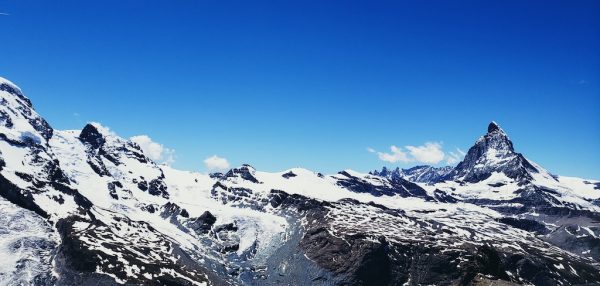
Take the Gornergrat cogwheel train to the summit of the Gornergrat. This is the place to take in one of the finest panoramic views in the world! We were so lucky to have amazing weather that day, and were simply awestruck to be intimately surrounded by the highest peaks of the Swiss Alps like the Matterhorn, the Monte Rosa, and the Gorner Glacier.
The entrance to the Gornergrat station in Zermatt is right outside the Zermatt train station in what looks like a convenient store. Look for the sign “Gornergrat Bahn”. The train ride to the summit takes about 30 minutes and is a treat in itself. It climbs up 1,500 meters through bridges, galleries and tunnels, with a magnificent view of the Matterhorn most of the way.
At the summit, there are plenty of facilities including restaurant, cafe, gift shop, restrooms and a hotel. We didn’t have a lot of time but 30 minutes felt sufficient. The summit is at an altitude of 3089 meters (10,134 feet) so you might feel some mild altitude sickness.
11:30 am
Lunch
12:30 pm
Gornergrat Hike

This easy 2-hour hike down from the Gornergrat is the best part of the excursion. The trails are well marked and even someone unprepared like us could do it fine. You’ll miss out so much if you take the cogwheel train back directly from the summit.
Our goal was to hike from the Gornergrat summit down to Riffelalp, then hop on the cogwheel train to return to Zermatt. This should only take about 1.5 hours without photo stops, though it took us longer since we also got lost due to trail closure on the way. You can even hike all the way to Zermatt which will take over 3 hours. To us, the section between Gornergrat and Riffelalp represents the finest section of the trail with the best view of the Matterhorn and rest of the Alps up close, so if you are short on time, at least do some of this trail. The key points along this trail are Gornergrat – Riffelsee/ Rotenboden – Riffelberg – Riffelalp and you can easily find them on the sign posts at most intersections. It was a bit tricky getting to Riffelalp for us, so if you’d like to end the hike at Riffelberg it would also be perfectly fine. There is train station at each point to take you back to Zermatt, and you can buy tickets there.
Of course, you can also hike up to Gornergrat, but we’d pick going down rather than climbing up in a heartbeat.
3:00 pm
Zermatt
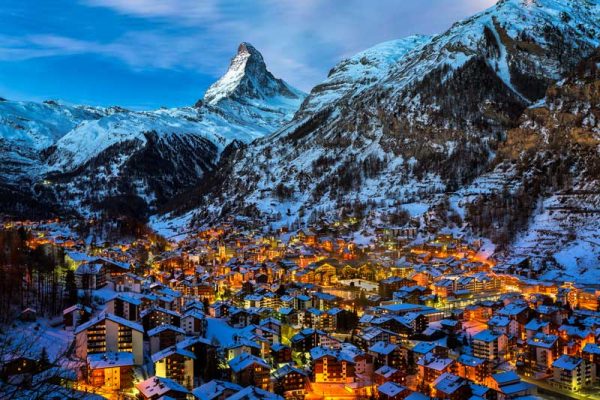
Explore Zermatt after returning from the Gornergrat. This charming mountain village is a perfect place to rest after a day’s activity at the mountains. My favorite area is Hinterdorfstrasse, a couple of cobblestone streets with traditional barns and Chalets, some of which dating back to the 16th century. This tiny area is the only place in Zermatt where you might get a glimpse into what the real mountain life would’ve been.
5:00 pm
Train to Interlaken
7:00 pm
Dinner
Day 4
Jungfrau
Day trip from Interlaken to Jungfraujoch and hike one of the world famous trails near North Face | Overnight in Zurich
8:30 am
Train to Jungfraujoch 🅕
We had to return to Zurich this day, so we checked out of the hotel and stored luggage there before making the journey to Jungfrau.
- Getting to Jungfraujoch from Interlaken
First take the train from Interlaken Ost to Kleine Scheidegg. Then from Kleine Scheidegg to Jungfraujoch with the Jungfraubanh cogwheel train.
From Interlaken Ost to Kleine Scheidegg, you have the options to either transfer via Lauterbrunnen or via Grindelwald. Both options take about an hour and cost around CHF80 per person.
If you choose the Lauterbrunnen route, try sitting on the right side of the train to get the magical view of the Lauterbrunnen village right at the foot of Staubbach Falls.
The 1-hour Jungfraubahn train from Kleine Scheidegg to Jungfraujoch station cost a whopping CHF150. Much of the train ride is through tunnels. It makes a short stop at Eismeer where you can step out for a few minutes to enjoy the view.
UPDATE: Starting from December 5, 2020, there is a new Eiger Express from Grindelwald Terminal to the Eigergletscher station that takes 45 minutes.
10:30 am
Jungfraujoch
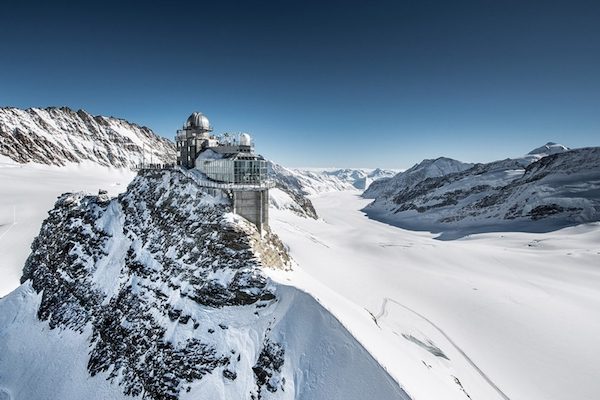
Jungfraujoch is a multi-story building located between Mönch and Jungfrau mountains with panoramic view points of the Alps. Once you get out of the train, you can follow the blue signs to complete a loop of the site visiting all attractions.
The main attractions are the Sphinx observatory, Ice Palace, Alpine Sensation, Glacier Plateau, and you can also go for a 45-minute hike to Mönchsjochhütte. We truly enjoyed the out-door Sphinx observatory but weren’t too impressed with the others. It took us about 2-3 hours inside the Jungfraujoch. We didn’t go for the hike to Mönchsjochhütte since it would add another two hours to our schedule, but if we had more time, I would definitely try it.
Frankly, the place was too touristy to our likings. We were there at the summer peak time, and the swarm of tourists took away the magical feeling about this place. Perhaps it would be more suited for families.
- Visiting Information
Train service around 8am – 6pm. Expect to spend 2-3 hours in the complex. Ticket is included in train tickets. Best to reserve tickets in busy months.
12:30 pm
Lunch
1:30 pm
Eiger Trail Hike
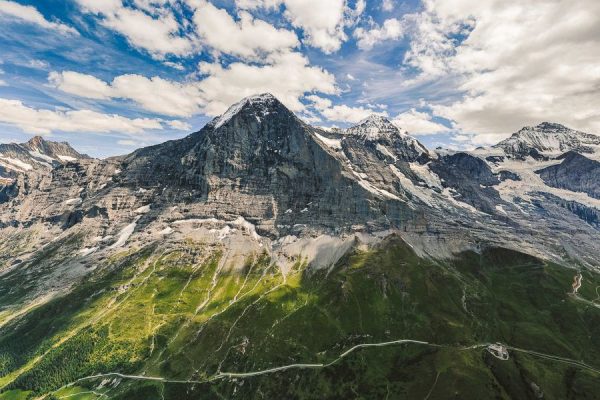
We chose to hike from Eigergletscher station to Alpiglen station to get a good view of the world-famous North Face of the Eiger. Our intention was to hike the Eiger Trail, but somehow ended up in a slightly different trail.
To start the hike, get off at the Eigergletscher station after leaving Jungfraujoch. If you want to do the Eiger Trail, make sure you follow the Eiger Trail sign (trail #36 below). Finish the hike at the Alpiglen train station.
3:30 pm
Train to Zurich
We need to return to Zurich that day so we picked up luggage at Interlaken hotel and hopped on a return train immediately which took 4.5 hours. We packed dinner and ate on the train as well. If not in a rush, best to leave Interlaken next day.

